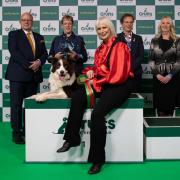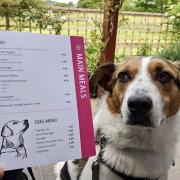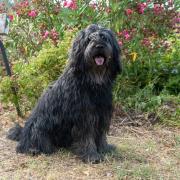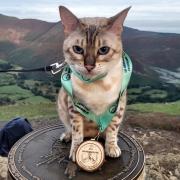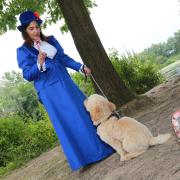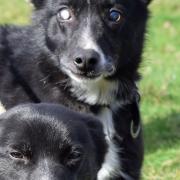A member of the once endangered Manchester Terrier breed is now thought to be the world’s only working rat-catcher, writes Emily Rothery.

Should you see a black and tan terrier trotting down the street with a distinguishing thumb print marking on its lower leg then you will know that it is a Manchester Terrier, a rare breed whose origins can be traced far back through history.
These spirited dogs have their roots in urban civilisation and were bred to hunt out vermin. They were efficient hunters and also used for rabbit coursing or to bring home rabbits for the pot.
In the 1800s their forebear, the Black and Tan, was thought to be have been crossed with a whippet and the name Manchester Terrier, sometimes known as the Gentleman’s Terrier, was coined. Second to none when it comes to ratting, the breed was used to lay waste to pest infestations in the developing towns, villages and mills around Manchester.
The sport of pit-ratting, which reached its peak in the mid-1800s, soon became popular with bets being placed on how many rats each dog could kill within a set period of time. One notorious venue was the Three Tuns in Bolton owned by Joe Orrel.

The terriers’ ears were cropped to prevent damage from rats but this practice became illegal in the 1890s resulting in the decline of the breed. Numbers then roller-coasted dramatically until breed fanciers rallied and formed the British Manchester Terrier Club in 1937. The breed enjoyed a period of prosperity until numbers again fell alarmingly after World War Two with only 11 dogs registered with the Kennel Club. To save them The Kennel Club allowed restricted breeding with the English Toy. Manchesters were also imported from America and the numbers increased once again.
However, with the introduction of modern pest control methods the breed is now prized as a companion or dog show competitor rather than a worker. The love of the chase, however, means that these agile dogs excel at agility, fly-ball and scent work.
Martin Kirkbride has owned three over the years and admits that he’s obsessed. In fact, nine years ago, his second terrier, Bobby, was pivotal in bringing about a major life change. ‘I’d been a social worker for 20 years and felt that I’d done my bit,’ explains Martin. ‘After writing a list of requirements for my next venture I realised that my dogs would play a big part.
‘I wanted to prove that the Manchester could once again be the working dog of old so decided to set up my pest control business through a franchise. I undertook general training and worked to obtain the Royal Society of Public Health qualification. Bobby became my first rat catcher and through pure instinct took to the job straight away. I knew then that he would be a viable working dog. He was an awesome – awkward and difficult but I loved him for it. He became really well-known and could always show me where the rats were even if I thought I knew better. He’s shown me rats watching us from atop an ironing board and even lifted a toilet seat when I’ve been looking elsewhere!’

Martin’s Oldham-based business, Genesis Environmental, covers all sorts of pest control. ‘Rats and cockroaches are my favourite,’ says Martin with a grin. ‘But on a more serious note planning and preparation are a priority to ensure that everyone, including the dog, is safe.’ Martin obviously takes great pride in his work.
His current dog is Drake, a handsome boy with bright watchful eyes. Martin tells me that he’s affectionate and smart but wary of people at first. I soon learn that the way to his heart is through a tasty treat and am rewarded with a high five - his one and only party trick because Drake is, after all, a working dog.
We meet in the Cross Keys Inn on Running Hill on the edge of Saddleworth Moor where Drake remains firmly on his lead. He’s constantly alert but stays close to Martin who explains: ‘He’s a quick learner and has excellent recall except when it comes to rabbits! He’s a sprinter; built for speed and can turn at 25mph but when not working he’s a couch potato. There’s nothing he likes better than the Test Match so that he can sleep while I watch, sometimes with his face tucked in my pocket.’
Five-year-old Drake has only worked with Martin for 10 months but has already proved his worth and the pair share a remarkable bond. ‘His first call out was to a rat in a kitchen which is a common scenario for us and he knew exactly what to do even though he’d never seen a rat before. UB40’s song ‘Rat in mi Kitchen’ could be our theme tune!’ Other venues include factories, building sites and food outlets.

Martin’s working dogs are inoculated against leptospirosis and wear high-viz jackets when working on building sites. Drake also has a tiny bell so that Martin can keep track of him.
‘As far as I know Drake is the only professional working Manchester Terrier rat catcher in the world. There are dogs that catch rodents on farms but they aren’t paid hourly – or should I say by the minute. Drake doesn’t spin the bill out because speed is of the essence. When he first started he was extremely pleased with himself when he caught a rat and would do a lap of honour. He’s a real character – a great mascot for the business and also possessively guards my van.’
Martin is also the rehoming officer for the Manchester Terrier Club. ‘My three dogs all came to me through rehoming – they give you such a lot back and have all been much loved, loyal family pets. We visit country fairs and hold other events to promote the breed. The Club also holds regular “mooches” around the country where passionate owners can meet up for a walk, coffee and chat. The dogs love their own kind and provide much entertainment as they indulge in high spirited play and talk to each other.’
Royal rat-catcher
LS Lowry owned two Manchester Terriers and often included them in his paintings. However, Martin but is quick to point out that the term ‘owner’ is a misnomer. ‘You don’t own a Manchester Terrier – they own you.’
Their forebears, previously known as the Black and Tan Terrier, appear in an illustrated manuscript The Hours of the Virgin dated at around 1500. The breed was well known in Tudor times and was mentioned by Dr Cauis, once the physician to Queen Elizabeth 1, in his Encyclopaedia of Dogs, circa 1570.
One of the most famous and colourful rat catchers was Jack Black who was the Royal Rat-catcher in Victorian times. Queen Victoria gave the breed a Royal Warrant.
Happily, these determined little dogs are making a come-back with 200 pups being bred in a good year thanks to people like Martin and the British Manchester Terrier Club.




